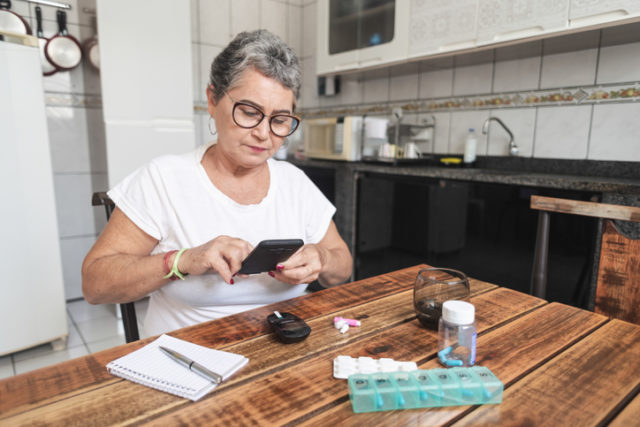
In conversations about aging well, the mantra of preventive care is well-known: prioritize sleep, adopt a balanced diet, engage in daily exercise, schedule regular check-ups and screenings, stay current on vaccinations, challenge the mind, and foster social connections to combat isolation and its associated health risks. Yet, within these well-established recommendations, one crucial element often remains overlooked — technology literacy. As we advocate for healthier aging, proficiency in technology emerges as not just an optional skill, but as a fundamental pillar of holistic healthcare for older adults.
Unlocking the power of tech literacy
Defined as the ability to comprehend information from digital devices and perform tasks accordingly, tech literacy is increasingly recognized as a societal necessity, on par with traditional preventive care measures. While discussions often center on preventive healthcare and supportive technology, equal emphasis must be placed on the usability of that technology. Progress lies not in the technology itself but in a person’s willingness to use it, which requires both skills and confidence to change behaviors and ensure adoption. With new AgeTech innovations surfacing every day, there is a massive gap in helping older adults develop the skills to keep up. Even the most cutting-edge solutions remain ineffective if not embraced and used. Therefore, older adults require support to leverage technology for longer, happier, and healthier lives.
Why tech literacy is fundamental to preventive care
- It empowers better healthcare decision-making. Digital literacy empowers older adults to actively participate in their healthcare decisions. Tech-savvy individuals can access health information, communicate with healthcare providers, and use telehealth options, leading to informed choices and reduced reliance on emergency care. The recent proposal by the Centers for Medicare & Medicaid Services (CMS) to mandate digital health education in Medicare Advantage plans by 2024 underscores the increasingly recognized role of digital literacy in healthcare, yet solutions remain woefully inadequate.
- It encourages effective condition management. Tech literacy plays a pivotal role in managing medical conditions for 95% of individuals over 60 dealing with at least one chronic disease. It enables proper use of medication reminders, access to resources for effective condition management, and facilitates improved communication with healthcare providers and caregivers. Technology proves especially beneficial for individuals with physical limitations, offering a means for a better understanding of care. For those with vision or hearing impairments, the ability to review healthcare provider recommendations at their own pace significantly improves compliance with these suggestions, providing a clear benefit to individuals.
- It makes preventive care manageable. Tech literacy can enhance adherence to all other preventative healthcare recommendations. Proficiency in technology facilitates seamless health monitoring, enables the setting of reminders for vaccinations and screenings, provides easy access to nutritional information, and opens doors to enhanced fitness through older adult-friendly online classes and wearable devices that encourage daily activity. Older adults with advanced digital literacy exhibit greater confidence in leveraging technology to manage their health and embracing behaviors that contribute to a healthier lifestyle.
- It enhances social connectivity. The aging process can introduce difficulties such as social isolation and depression among older adults. According to the World Health Organization (WHO), older adults dealing with social isolation face increased health risks like heart disease, stroke, and coronary artery disease. Technology, while not a replacement for human connection, emerges as a potent tool to mitigate these challenges, increasing access to the broader world. Connecting with loved ones and established communities through video calls, social media, text messages, or email becomes more feasible for digitally literate older adults, thereby reducing the associated risks of isolation. Tech-savvy individuals are also more likely to seek out groups aligned with their interests, fostering an enhanced sense of belonging and helping counteract the detrimental effects of loneliness.
- It facilitates independent living. By integrating smart devices and assistive technologies, tech literacy empowers older adults to redefine their living spaces, fostering independence and elevating their overall quality of life. This transformation not only extends the duration of aging in place but also enhances safety. Remote monitoring devices, facilitated by technology, contribute to improved communication, higher levels of confidence and independence, and the added value of ensuring that caregivers remain well-informed about the well-being of older adults.
- It encourages mental stimulation. Beyond the physical benefits, tech literacy opens avenues for mental stimulation. Exploring educational resources, engaging in brain-training apps, and discovering new interests online contribute to better overall cognitive health and offer ways to stay busy and engaged in their homes. Engaging in continuous learning has been known to delay age-related cognitive decline.
Fostering tech literacy: A vital call for training and support
Technology can be a powerful tool to add to an active agers life. In an era brimming with technological advancements and more on the horizon, the effectiveness of these tools relies heavily on literacy. Understanding how to unleash the full potential of modern innovations should be at the forefront of our societal discussions. Given that, only 18% of older adults would feel comfortable learning to use a new device on their own, and 77% express the need for assistance with technology, in-person training, readily available resources, and ongoing, patient, trusted support are indispensable. The extension of these services to older adults becomes vital.
The more tech-knowledgeable older adults become, the happier, healthier, and safer they will be. A tech-literate aging population not only eases the burden on the healthcare system but also contributes to broader societal benefits. It’s time for a paradigm shift — a recognition that tech literacy is a determinant of individual health. Addressing this is not just desirable but a health imperative, making it a public health priority. By actively promoting tech literacy and providing tailored solutions, we pave the way for a future where older adults are not merely living longer but living better, feeling more included, and more confident in a world that is digitizing around them.
Source: wagnerokasaki Getty Images








